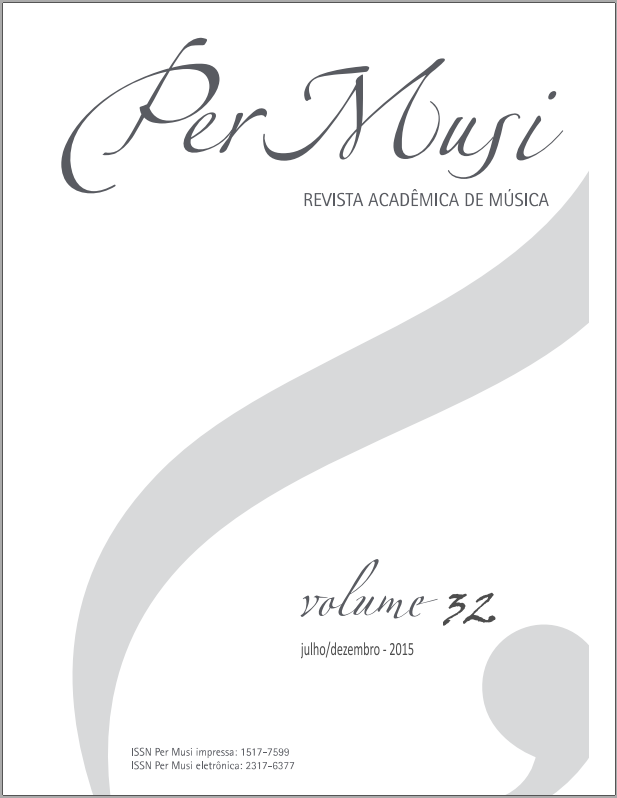"Love" and "death" in the madrigals of Carlo Gesualdo
a study on the development of music and text writing
Keywords:
Renaissance, Italian madrigal, Carlo Gesualdo, Music and textAbstract
Gesualdo’s compositional writing evolves throughout his six books of madrigals. In the first period, Gesualdo used the most common procedures, such as the contrast between counterpoint and homophony. In the following periods, he began to look for more sophisticated musical elements in order to explore different sounds. Through this process, the composer vigorously emphasized words and, thus, the narrative of the poems, reaching for uncommon harmonic resultants and false melodic relations. The analysis of these words in procedures by Gesualdo reveals his deepening of expressivity and a maturing style.
References
MISURACA, P. (2000). Carlo Gesualdo, Principe di Venosa. Palermo: L’Epos.
WATKINS, G. (1991). Gesualdo: The Man and His Music. Oxford: Clarendon Press.
IUDICA, G. (1993). Il Principe dei musici. Palermo: Sellerio editore.
Referências de partituras e gravações
GESUALDO, C (2010). Don Carlo Gesualdo (1566-1613), The Complete Madrigals, 6 volumes. The Kassiopeia Quintet. Netherlands: GLO 5241, Globe Records.
WEISMANN, W. WATKINS, G. (1980). Gesualdo di Venosa – Madrigale für Fünf Stimmen – Erste Buch. Leipzig: Deutscher Verlag für Musik.
WEISMANN, W. WATKINS, G. (1988). Gesualdo di Venosa – Madrigale für Fünf Stimmen – Zweites Buch. Leipzig: Deutscher Verlag für Musik.
WEISMANN, W. WATKINS, G. (1980). Gesualdo di Venosa – Madrigale für Fünf Stimmen – Drittes Buch. Leipzig: Deutscher Verlag für Musik.
WEISMANN, W. WATKINS, G. (1980). Gesualdo di Venosa – Madrigale für Fünf Stimmen – Viertes Buch. Leipzig: Deutscher Verlag für Musik.
WEISMANN, W. WATKINS, G. (1980). Gesualdo di Venosa – Madrigale für Fünf Stimmen – Fünftes Buch. Leipzig: Deutscher Verlag für Musik.
WEISMANN, W. WATKINS, G. (1982). Gesualdo di Venosa – Madrigale für Fünf Stimmen – Sechstes Buch. Leipzig: Deutscher Verlag für Musik.
Downloads
Published
Issue
Section
License
Copyright (c) 2015 Per Musi

This work is licensed under a Creative Commons Attribution 4.0 International License.

Except where otherwise noted, contents on this site are licensed under a Creative Commons - Atribuição 4.0 Internacional.


